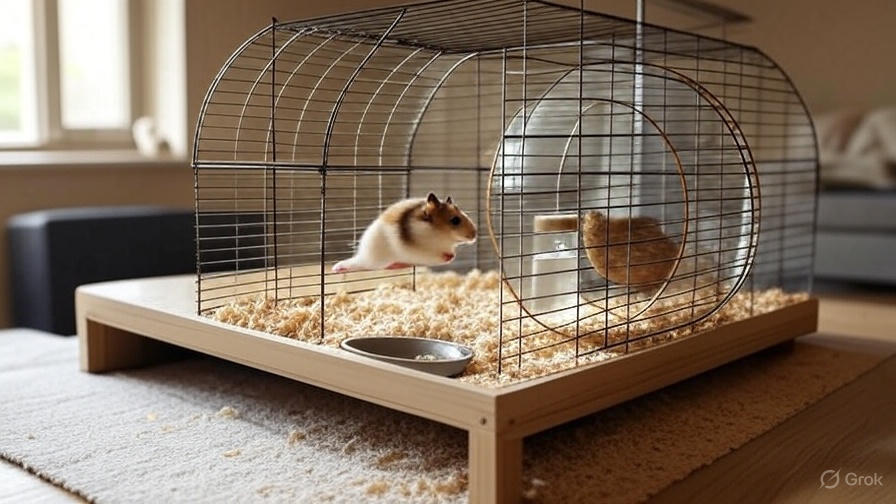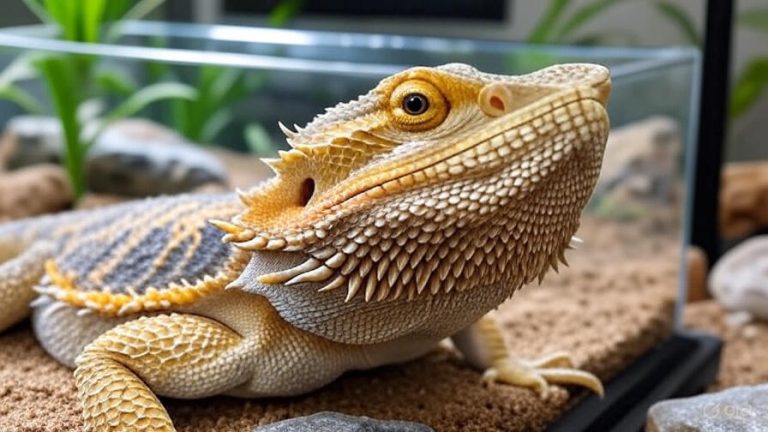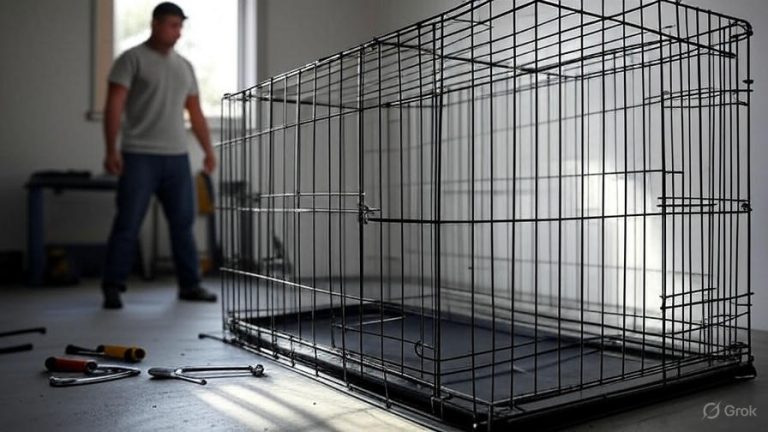How Big Should a Hamster Cage Be?
Your hamster deserves more than just a tiny plastic prison. The size of your pet’s home directly affects their health, happiness, and lifespan. Many new hamster owners make the mistake of buying cages that look adequate but fail to meet their pet’s basic needs.
Why Cage Size Matters for Your Hamster’s Health
Hamsters are naturally active creatures that travel several miles each night in the wild. Syrian hamsters, the largest species, roam territories spanning up to 8 miles in their natural habitat. When we confine these energetic animals to cramped spaces, we create serious behavioral and health problems.
Small cages cause stress-related behaviors like bar chewing, excessive grooming, and aggressive tendencies. Your hamster might also develop repetitive behaviors such as pacing or attempting to escape. These stress indicators often lead to weakened immune systems and shorter lifespans.
Proper cage sizing prevents these issues while promoting natural behaviors. A spacious environment allows your hamster to establish separate areas for sleeping, eating, exercising, and using the bathroom. This territorial behavior is essential for their psychological well-being.
Minimum Cage Size Requirements by Species
Different hamster species have varying space requirements based on their size and activity levels. Here’s what you need to know about each type:
Syrian Hamsters (Golden Hamsters)
Syrian hamsters are the largest domestic hamster species, requiring the most space. The absolute minimum floor space should be 450 square inches, but 600 square inches or more is ideal. This translates to approximately 40 inches long by 20 inches wide for a rectangular cage.
These solitary hamsters need extra room because they’re naturally territorial. A cramped Syrian hamster will quickly develop stress-related behaviors and may become aggressive toward their owners during handling.
Dwarf Hamster Species
Dwarf hamsters include Chinese, Russian, and Roborovski varieties. While smaller than Syrians, they’re often more active and require substantial space. The minimum floor space should be 360 square inches, with 450 square inches being preferable.
Chinese hamsters are particularly active climbers and benefit from vertical space in addition to floor area. Russian dwarf hamsters can sometimes live in pairs, but this doesn’t reduce the space requirements – it actually increases them.
Roborovski Hamsters
Roborovski hamsters are the smallest domestic species but also the most active. They’re incredibly fast runners and need plenty of space to burn energy. Despite their tiny size, they require the same minimum 360 square inches as other dwarf species.
These hamsters are social and can live in same-sex pairs or small groups. However, multiple hamsters mean you need even more space – add at least 180 square inches for each additional hamster.
International Standards vs. Common Pet Store Advice
Pet stores often recommend cages that are far too small for hamsters. Many commercial “hamster cages” provide only 150-200 square inches of floor space – less than half the minimum requirement for any hamster species.
European standards are much more stringent than American guidelines. German animal welfare organizations recommend minimum floor spaces of 775 square inches for all hamster species. British hamster societies suggest similar sizing, with minimum dimensions of 80cm x 50cm (approximately 620 square inches).
The Association of Zoos and Aquariums recommends even larger spaces for hamsters in professional settings. Their guidelines suggest 1,000 square inches as the minimum for Syrian hamsters, with additional space for enrichment items.
Calculating Floor Space Correctly
Many people make errors when calculating cage dimensions. Floor space refers to the continuous, uninterrupted area where your hamster can move freely. This measurement doesn’t include:
- Wire shelves or platforms
- Space occupied by the water bottle
- Areas blocked by large toys or accessories
- Vertical space (height doesn’t count toward floor space)
To calculate floor space, multiply the length by the width of the cage bottom. For example, a cage measuring 40 inches long by 20 inches wide provides 800 square inches of floor space.
Multi-level cages can provide additional space, but only if the levels are properly connected with ramps and each level is large enough for your hamster to move around comfortably. Tiny platforms or narrow shelves don’t contribute meaningful space.
Vertical Space Requirements
While floor space is most important, hamsters also need adequate vertical clearance. The minimum height should be 12 inches, but 15-18 inches is better for most species. This allows room for:
- Deep bedding (3-4 inches minimum)
- A proper exercise wheel
- Water bottle placement
- Hiding spots and enrichment items
Chinese hamsters are excellent climbers and benefit from extra vertical space. They enjoy climbing branches, ropes, and multi-level platforms. For these hamsters, consider cages with 20+ inches of height.
Best Cage Types for Optimal Space
Glass Aquariums (Tank Style)
Glass aquariums make excellent hamster homes because they provide maximum floor space without interruptions. A 40-gallon breeder tank offers approximately 648 square inches of floor space – perfect for Syrian hamsters.
The solid walls prevent bedding from spilling out and create a more secure environment. Glass tanks also provide better visibility for observing your hamster’s natural behaviors.
Make sure to use a secure mesh lid with proper ventilation. Aquarium hoods designed for fish tanks don’t provide adequate airflow for hamsters.
Bin Cages (DIY Storage Container Cages)
Large storage containers can be converted into spacious hamster homes at a fraction of the cost of commercial cages. A 110-quart storage bin provides over 600 square inches of floor space.
You’ll need to add ventilation by cutting out sections of the lid and walls, then covering the openings with hardware cloth. This DIY approach allows you to create a custom-sized habitat that meets your hamster’s specific needs.
Wire Cages with Solid Bottoms
Wire cages can work well if they’re large enough and have solid bottoms. Avoid cages with wire floors, as these can cause injuries and don’t hold bedding properly.
Look for cages with horizontal bars that your hamster can climb. The bar spacing should be no more than 0.5 inches for Syrian hamsters and 0.25 inches for dwarf species to prevent escapes.
Common Sizing Mistakes to Avoid
Trusting Pet Store Recommendations
Pet stores often prioritize profit over animal welfare. They may recommend small cages because they’re cheaper and easier to sell. Always research proper sizing independently rather than relying on store employees.
Focusing Only on Height
Tall, narrow cages don’t provide the floor space hamsters need. A cage that’s 12 inches wide and 60 inches tall still only offers minimal floor area for running and exploring.
Ignoring Bar Spacing
Improper bar spacing can be dangerous. Gaps that are too wide allow escapes, while bars that are too close together restrict airflow and climbing opportunities.
Assuming Bigger is Always Better
While larger cages are generally better, extremely large spaces can sometimes cause stress for some hamsters. The key is finding the right balance between adequate space and security.
Setting Up Your Properly Sized Cage
Once you have the right cage size, proper setup is crucial. Your hamster needs distinct areas for different activities:
Sleeping Area
Provide a cozy hideout in one corner of the cage. This should be large enough for your hamster to curl up comfortably but small enough to feel secure. Multiple hiding spots are even better.
Exercise Zone
Place the exercise wheel in an area with plenty of clearance. The wheel should be at least 8 inches in diameter for Syrian hamsters and 6.5 inches for dwarf species. Solid-surface wheels are safer than wire wheels.
Bathroom Corner
Hamsters naturally designate one area as their bathroom. Place a small litter box filled with paper-based litter in this corner. This makes cleaning easier and keeps the rest of the cage fresh.
Food and Water Station
Position food and water away from the bathroom area. Use a heavy ceramic bowl for food to prevent tipping, and provide fresh water daily in a bottle or bowl.
Enrichment Items That Require Space
A properly sized cage allows room for essential enrichment items:
Tunnels and Burrows
Hamsters love exploring tunnels and creating burrow systems. Provide various tunnel options like cardboard tubes, wooden tunnels, or plastic tubing systems.
Climbing Structures
Branches, ropes, and platforms give hamsters opportunities to climb and explore vertically. These items need adequate clearance and secure attachment points.
Foraging Opportunities
Scatter feeding and hiding treats around the cage encourages natural foraging behaviors. This requires enough space to create interesting hiding spots throughout the habitat.
Impact of Inadequate Space on Behavior
Hamsters kept in undersized cages develop numerous behavioral problems:
Stereotypic Behaviors
Repetitive behaviors like bar chewing, excessive grooming, and pacing indicate severe stress. These behaviors can become compulsive and are difficult to stop even when conditions improve.
Aggression
Cramped hamsters often become nippy and difficult to handle. They may bite their owners or show aggressive posturing when approached.
Depression and Lethargy
Some hamsters respond to inadequate space by becoming inactive and withdrawn. They may sleep excessively and show little interest in food or interaction.
Shortened Lifespan
Chronic stress from poor housing conditions weakens the immune system and can significantly reduce your hamster’s lifespan. Well-housed hamsters typically live 2-3 years, while stressed hamsters may live only 12-18 months.
Benefits of Proper Cage Sizing
Hamsters kept in appropriately sized cages show numerous positive behaviors:
Natural Activity Patterns
Properly housed hamsters are active during their natural nighttime hours. They’ll run on their wheel, explore their territory, and engage in normal foraging behaviors.
Improved Health
Adequate space promotes better physical health through increased exercise and reduced stress. Well-housed hamsters have stronger immune systems and fewer health problems.
Better Socialization
Hamsters that aren’t stressed by cramped conditions are typically more docile and easier to handle. They’re more likely to enjoy interaction with their owners.
Longer Lifespan
Proper housing conditions contribute to longer, healthier lives. The investment in a larger cage pays off with more years of companionship.
Conclusion
The size of your hamster’s cage is one of the most important decisions you’ll make as a pet owner. While the initial cost of a properly sized cage may seem high, the benefits to your hamster’s health and happiness are immeasurable.
Remember that minimum requirements are just that – minimums. If you have the space and budget, go larger. Your hamster will use every square inch you provide, and you’ll be rewarded with a healthier, happier pet.
Don’t let pet store recommendations or budget constraints compromise your hamster’s welfare. With some research and creativity, you can provide an excellent home that meets all your hamster’s needs without breaking the bank. Your furry friend will thank you with years of entertaining antics and companionship in their properly sized palace.







